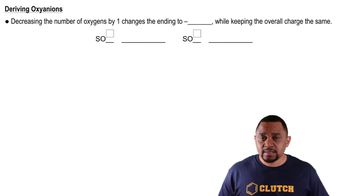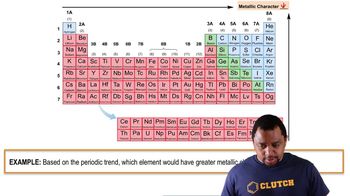Here are the essential concepts you must grasp in order to answer the question correctly.
Ionic vs. Molecular Compounds
Ionic compounds are formed from the electrostatic attraction between positively and negatively charged ions, typically involving a metal and a non-metal. In contrast, molecular compounds consist of molecules formed by covalent bonds between non-metals, sharing electrons. Understanding the difference is crucial for predicting the nature of a compound.
Recommended video:
Polyatomic Ions
Polyatomic ions are charged entities composed of two or more atoms covalently bonded, which can act as a single unit in chemical reactions. For example, in CoCO₃, the carbonate ion (CO₃²⁻) is a polyatomic ion that indicates the compound's ionic nature when combined with cobalt (Co). Recognizing these ions helps in classifying compounds.
Recommended video:
Polyatomic Ion Variations
Metallic Character and Oxidation States
The metallic character of an element influences its ability to form ionic compounds. Cobalt (Co) can exhibit multiple oxidation states, which affects its bonding behavior. Understanding oxidation states is essential for predicting whether a compound will be ionic or molecular, especially when dealing with transition metals.
Recommended video:
Metallic Character Example

 Verified step by step guidance
Verified step by step guidance


